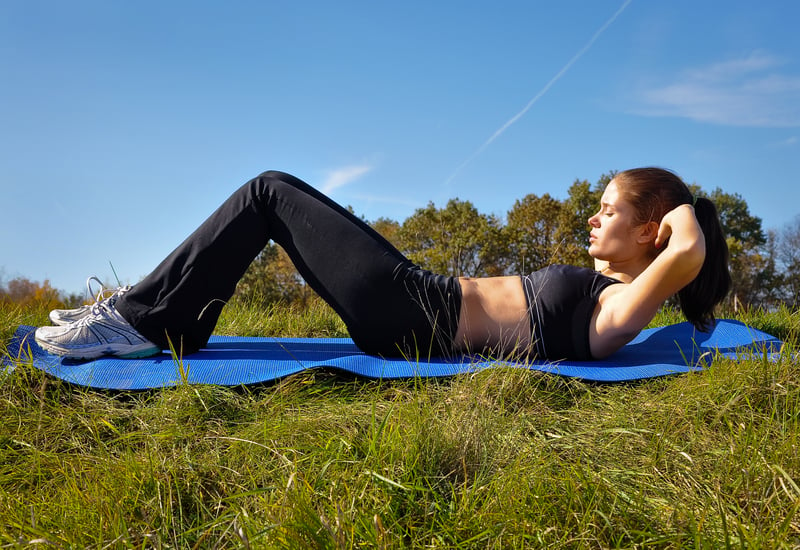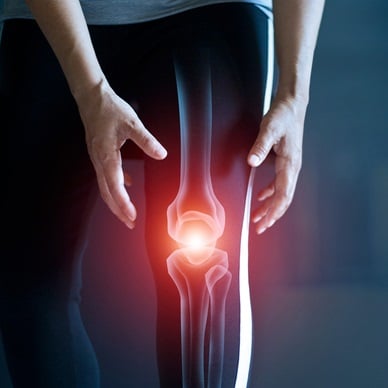Crunches vs. Sit-ups — Which Ab Exercise Is More Effective?

When it comes to working your midsection, some folks prefer crunches, and some lean toward sit-ups, and if you’ve been on the fitness scene for any length of time, you’ve undoubtedly done both. But when it comes to the true showdown between crunches vs. sit-ups, which one comes out the winner?
What is Your Core?
Your core comprises the middle of your body—from just below your ribcage all the way down to your pelvic area. Technically, your core includes a lot more muscles than just your abdominals. In actuality, besides all the ab muscles (internal and external obliques, rectus abdominis, transversus abdominis), it includes muscles in the front, back, and sides of your body: pelvis and hips, glute muscles, hamstrings, muscles in the back, and even spinal erectors.
The function of your core is multifold in that it is in place to support your spine and assist with movement in all directions. Your core also helps hold in and protect your organs. Additionally, your core is mostly responsible for balance, stability, and posture. Having a strong core is important when it comes to doing everyday activities as well. Just think about all the times throughout every day that you engage your abs:
- Getting out of bed
- Walking, running, standing
- Twisting, turning
- Kicking, swinging
- Assisting with bodily functions
- Controlling internal pressure
- Stabilizing all other movements
What is a Crunch?

A crunch is similar to a sit-up in that it works the six-pack muscles in the front of your body (the rectus abdominis) as well as the muscles on both sides of your body (the obliques). This exercise focuses almost exclusively on the abdominals.
How do you perform a crunch? Start by lying on a mat with your knees bent and your feet about hip-width apart and flat on the floor. Place your hands lightly behind your head and bring your chin slightly downward. You should not feel any pressure on your neck, so you don’t want to pull on your head as you go through the movement.
Look up at the ceiling and contract your abdominals as you lift your head and shoulder blades off the ground. The idea is to raise your upper body off the ground by curling up and slightly forward. Don’t sit all the way up. Simply contract your abdominals and hold a few inches above the ground.
LIMITED TIME OFFER: Get Ageless Turmeric, Our Highly-Bioavailable Turmeric & Ginger Supplement, As Low As $14
Then slowly release while keeping tension on the abs and move your upper body back down to the mat. Repeat.
What is a Sit-Up?

A sit-up is an old-school staple that works not only your abdominals but your lower back and hip flexors. Unlike its sister exercise, the crunch, a sit-up does have you coming all the way up from the floor into a sitting position.
Start in the same manner you would for a crunch: lying on your back with your feet flat on the floor and your knees bent. You’ll need a partner to hold your feet in place or anchor them under something. Place your hands loosely behind your head, again without pressure on your head and neck. Or, you may want to simply place a hand gently on each side of your head, so you’re not tempted to pull on your head as you sit up.
Next, curl slightly at the hips, pushing your abdominals down and lifting your torso up and forward until you are in a seated position. Your torso should be at your knees. Move slowly back down to the ground, maintaining tension on your abs as you do so.
Crunches vs. Sit-Ups: Which is Better?
The answer in the crunches vs. sit-ups debate is they can both work for you, depending on your own personal condition and goals. There are benefits to both:
Unique Benefits of Sit-ups:
- Strengthens your entire core
- Works many muscle groups
- A lot of the body is involved in this functional movement
- Uses a greater range of motion than a simple crunch
Unique Benefits of Crunches:
- Focus on just the abdominals
- Minimal on the back
- Does not require a partner or an anchor for the feet
- Teaches you to isolate, activate, and contract the abs
While very similar exercises, the sit-up tends to work a greater region of the core while a crunch will allow you to zone in on your six-pack. However, if you have back or neck problems, sit-ups are most likely not for you and a crunch may be safer.
The bottom line is that strengthening your abs and your entire core should be part of your fitness plan. But don’t forget, you can do thousands of crunches and sit-ups but your abs will never be revealed until your diet is in check. So, add these exercises (or whichever one works best for you, or mix it up) to your overall healthy lifestyle for optimal results.



 US Doctor: "Eating This Every Day Can Snap You Into Ketosis"
US Doctor: "Eating This Every Day Can Snap You Into Ketosis" 3 Key Nutrients to Help Lubricate Your "Tin Man" Joints
3 Key Nutrients to Help Lubricate Your "Tin Man" Joints AVOID Plant-Based Protein Powders (unless...)
AVOID Plant-Based Protein Powders (unless...)

